SPEKTRA has the following Device Testing for sensor system level testing for development and production:
- S Test Lab: system level test solution for sensor lab and development environments.
- S Test Fab: tailored for parallel testing of a large number of devices and allow an easy scalability while maintaining an optimized test per device cost ratio.
- S-Test Interface Cards: Available measurement cards allow easy parallelization and enable high data throughput.
- Exciter Systems for: Acceleration, Piezoelectrical, Shock, Acoustics, Pressure, Magnetic and Rotation
- Power Amplifier: Selection of power amplifiers that offer protective functions suited to the respective exciter. They can operated in voltage or current mode.
- Software with flexible software components for multiple applications
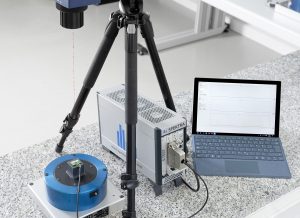
Featured Products
S-Test Lab
The S-TEST Lab systems provide a wide variety of sensor system tests for development and laboratory environments. The system components, which can be configured in a flexible manner, also allow users to react quickly to various test requirements and sensor types. From parametric tests, functional tests, measured value comparison to characterization – SPEKTRA system solutions give sensor developers extensive options for identifying design errors at an early stage.
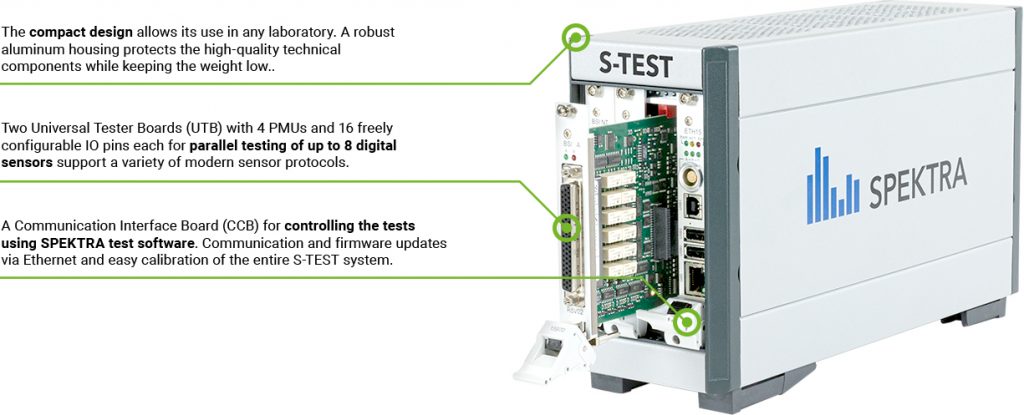
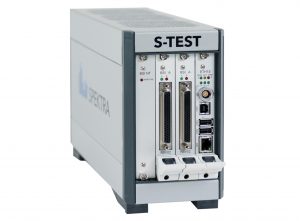
S-TEST/2 – Compact test system for digital sensors
- Can hold 2 Universal Tester Board (UTB) cards to connect up to 8 sensors (4 sensors per card)
- Ethernet Interface card (ETH) for system communication, test and firmware loading and self-calibration
- Integrated power supply
- Foldable front stand feet
- LED system status indicators
- Integrated fan
- Parallel sampling with timestamp
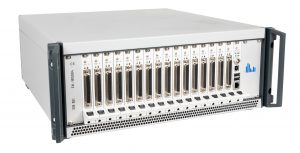
S-TEST/16 Lab – Efficient measurement system for digital sensors
- Can hold up to 16 Universal Tester Board (UTB) cards to connect up to 64 sensors (4 sensors per card)
- Ethernet Interface card (ETH) for system communication, test and firmware loading and self-calibration
- Integrated power supply
- Foldable front stand feet
- LED system status indicators
- Integrated fan
- Parallel sampling with timestamp
S-Test Lab System
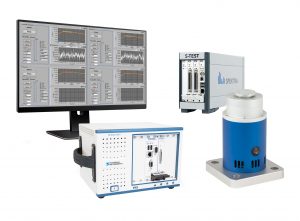
S-TEST Lab DRE
The S-TEST Lab DRE system is based on the DRE-01 dynamic rotation exciter. A typical application here is the determination of the properties of MEMS sensors and sensor components in the development phase.
- Electro-dynamic drive
- Frequency range: 1 Hz to 5 kHz
- Very low cross-acceleration
- Max. payload: 500 g
- Max. angular velocity: 5300 °/s
- Max. angular acceleration: 2.5 × 106 °/s2
- Distortion factor (angular velocity): < 3%
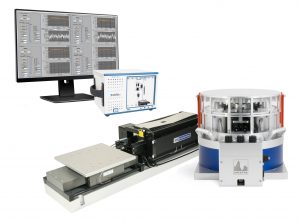
S-TEST Lab ALF
The S-TEST Lab ALF systems can be setup with a wide range of low-frequency acceleration exciters. These shakers are available with an air bearing design for very precise motion or with robust ball bearing design for harsh testing conditions.
- Air bearing low-frequency exciters:
- APS 600: Frequency range up to 100 Hz
- APS 113-AB, APS 129, APS 500: Frequency range up to 200 Hz
- SE-13: Frequency range up to 400 Hz
- Ball bearing low-frequency exciters APS 113, APS 400 or APS 420
- Frequency range up to 200 Hz
- Max. force: 900 N
- Vertical and horizontal mode of operation
- Synchronous, well-tuned multi-exciter operation, multi-channel option
- 4 vibration modes
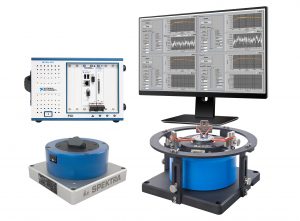
S-TEST Lab AHF
Based on SPEKTRA high-frequency exciters SE-09 and SE-11, the S-TEST Lab AHF systems are a perfect fit for calibration and characterization of MEMS, digital sensors and other small components. Those typical systems were especially designed for system testing at high frequencies.
- Force rating: 100 N
- Frequency range: SE-09: 3 Hz to 50 (95) kHz / SE-11: 1 kHz to 50 (95) kHz
- Sample rate: 120/200 kS/s
- 24 Bit resolution
- SE-11 eligible for climate chamber
- Remote control for climate chamber
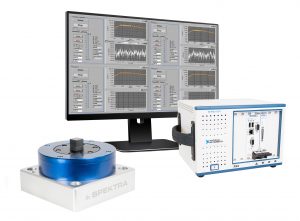
S-TEST Lab VHF
The S-TEST Lab VHF system for sensor characterization in very high frequency is based on the SE-16 vibration exciter, which has been specially developed for high frequency excitation of small components and sensors both in the longitudinal and transverse direction.
- Frequency range: 5 kHz to 100 kHz (200 kHz)
- Acceleration up to 400 m/s²
- Displacement: 8 /0.01 mm
- Sample rate: 120/200 kS/s
- Mounting in different orientation to direction of movement
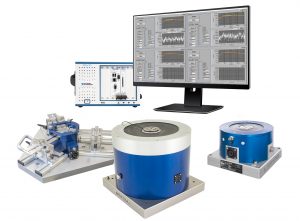
S-TEST Lab AMF
The S-TEST Lab AMF systems are based on the SPEKTRA vibration exciters such as the SE-10 or the SE-14, which have been especially developed for the excitation of DUTs and sensors in the medium frequency range.
- Frequency range:
- SE-10: 3 Hz to 10 kHz
- SE-14: 0 Hz to 8 kHz
- SE-101 RES-HA: 65 Hz to 500 Hz
- Max. force: 100 N
- Max. payload: 2 kg
- Sample rate: 20/120 kS/s
- 24 Bit resolution
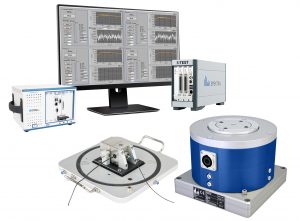
S-TEST Lab DPE
SPEKTRA have developed unique test equipment for pressure sensors that offers sine and shock excitation. An impulse with a max. pressure level of up to 420 MPa is introduced into your sensor. The pressure chamber can be adjusted and the DPE-02 can be configured as a vibration exciter, if required.
- With SE-10 based DPE-01 pressure exciter
- Frequency range: 10 Hz to 2 kHz
- Amplitude: 100 Pa to 16 kPa
- With dynamic pressure exciter DPE-02
- 22 MPa to 420 MPa
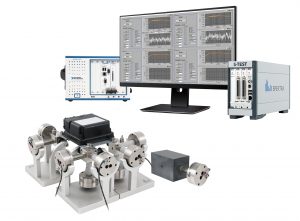
S-TEST Lab APC
The special design of the Piezocube makes it possible to introduce vibrations to a DUT at different mounting points or axes. This allows for controlled modal analysis – as is commonly required for high-frequency excitation of large DUTs (e.g. groups of several sensors).
PC-01 for single-axis or PC-X for multi-axis excitation
- High-performance ceramic block with piezoelectric actuator
- Frequency range: 5 kHz to 40 kHz
- Acceleration: 300 m/s²
- Sample rate: 200 kS/s
- Low weight and high stiffness offer high resonance frequencies
- Complex 3D field data replication or simultaneous sine/noise excitation in XYZ requires a complex setup with 9 amplifiers and a 9-channel VCS.
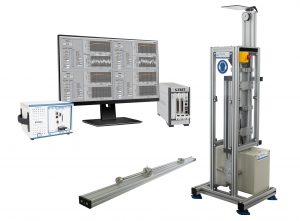
S-TEST Lab STS
In sensor characterization, shock excitation helps test the robustness of a DUT. The shock excitation allows a very precise and controlled impulse to be applied to the DUT. The piezo exciter allows you to set the pulse length and amplitude independently within a certain range.
- Wide amplitude range from 200 m/s² up to 2,000 km/s²
- Payload: 80 g
- Excitation mode: semi-sinusoidal shock, adjustable waveform or sinusoidal burst
- Excitation with hammer-anvil or piezoelectric actuator
- Independent control of amplitude and pulse width
- Excellent repeatability of shock
S-Test Fab
The S-TEST 16 Fab systems are designed for use in sensor mass production. Their optimized design allows operation in temperature-controlled switch cabinets. Variable throughput rates and test coverages can be realized ranging from small test series to highly parallel testing of several hundred sensors.
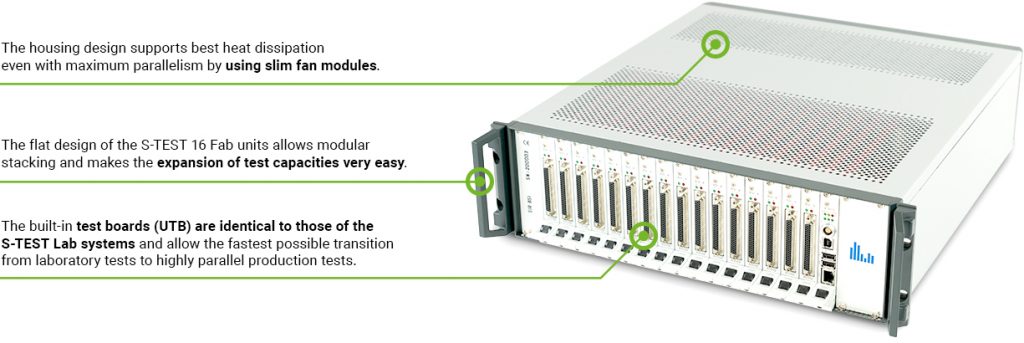
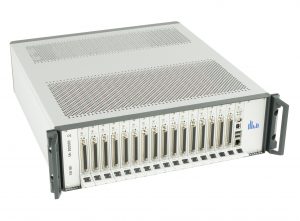
S-TEST/16 Fab – Production test system for digital sensors
- Can hold 16 Universal Tester Board (UTB) cards to connect up to 64 sensors (4 sensors per card)
- Ethernet Interface card (ETH) for system communication, test and firmware loading and self-calibration
- Integrated power supply
- LED system status indicators
- Integrated fan
- Parallel sampling with timestamp
S-Test Interface Card

S-TEST UTB (BSI) – Universal Tester Board
Universally applicable board for efficient System Level Test (SLT) of digital sensors, sensor characterization testing or final tests in sensor mass production.
- Selected Data:
- Supply voltage range: −2 V to +20 V (25V Only UTB Power Source #4)
- Max. sensor supply current: up to ±50 mA/source
- 12.5 ns timing resolution
- Slew Rate Control (1 V/μs to 8.3 V/ms)
- Features:
- Fast FPGA for FW and host interface IP cores
- Support for SPI, I²C, JTAG, SENT, PSI5, CAN‑FD2), LIN, ZACwire™
- 16 freely programmable IO pins
- 4 independent power sources
- External trigger functionality
- Fast LVDS backplane interface
- Special Function interface for custom hardware extension
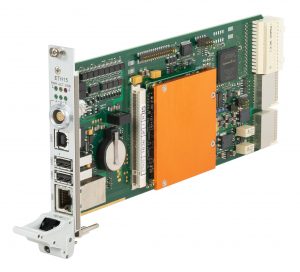
S-TEST – Chassis Controller Board
Interface board for S-TEST system solutions
- Digital Front-End:
- 2 x Trigger Input
- 2 x Digital Output
- 5 V Supply Voltage
- Calibration Lines for Voltage and Resistance
- Communication:
- TCP control & command
- 3 x USB for Configuration and Maintenance
- DDS-module for clock generation e.g. for SPI
- 36 LVDS Lines for internal UTB communication
- S-TEST Logic & FW Updates
- Easy exchange of interface logic blocks
- S-TEST Chassis Self Calibration
- Highly stable reference voltage source
- Precision reference resistors
Acceleration Exciters
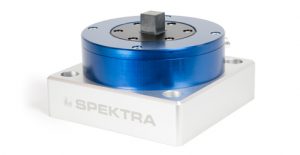
SE-16
Rugged vibration exciter that has been specially developed for high frequency excitation of small components and sensors both in the longitudinal and transverse direction.
- Frequency Range: 5 kHz – 100 kHz (Up to 200kHz under certain conditions)
- Max. Acceleration: 400 m/s2
- Max. Force: 12 N
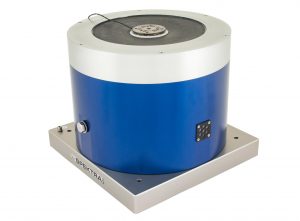
SE-14
Spring-guided vibration exciter that is suitable for daily use in the calibration laboratory as well as for vibration tests.
- Frequency Range: 0 Hz – 8 kHz
- Max. Acceleration: 500 m/s2
- Max. Displacement (peak-peak): 20 mm
- Max. Force: 265 N
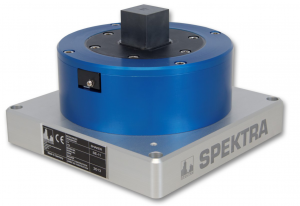
SE-11
The SE-11 high frequency vibration exciter was developed especially for the characterization of sensors, MEMS and small components (up to 50 kHz).
- Frequency Range: 1 kHz – 50 kHz
- Max. Force: 100 N
- Max. Displacement (peak-peak): 30 μm
- Resonance Frequency: 52 kHz
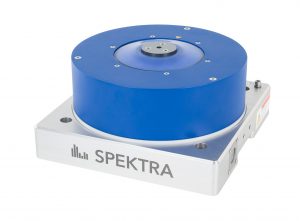
SE-29
Innovative high frequency vibration exciter with efficient electrodynamic drive. The SE-29 offers a very wide frequency range and low transverse motion. Thanks to the wide temperature range and the high payload, the SE-29 is optimally suited for larger sensors or geophones. Besides high quality components, the focus lays on a versatile field of application and easy implementation into existing test environments.
- Frequency Range: 3 Hz to 50 kHz (with optional internal reference standard)
- Max. Acceleration (sine-peak): 450 m/s2
- Max. Force (sine-peak): 95 N
- Max. Displacement (peak-peak): 10 mm

SE-21
With its electrodynamic drive system, the SE-21 offers a very wide frequency range with low transverse motions. A high payload, simple operation in a climatic chamber (as SE-21T) and the many extensions enable the SE-21 to be used as a multi-tool for testing, characterizing and calibrating vibration sensors or smaller electronic devices.
- Frequency Range: 3 Hz to 50 kHz (with optional internal reference standard)
- Max. Acceleration (sine-peak): 390 m/s2 For SE-21, 350 m/s2 For SE-21T
- Max. Force (sine-peak): 95 N
- Max. Displacement (peak-peak): 10 mm
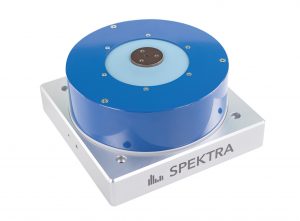
SE-20
The SE-20 offers a very wide frequency range, low transverse motion, wide temperature range and high payload. In addition to top quality components, the focus is on a versatile user field and easy implementation in existing test environments.
- Frequency Range: 3 Hz to 20 kHz (with optional internal reference standard)
- Max. Acceleration (sine-peak): 600 m/s2
- Max. Force (sine-peak): 95 N
- Max. Displacement (peak-peak): 10 mm
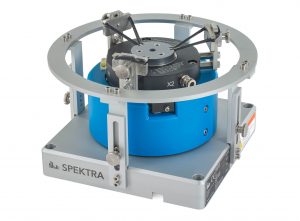
SE-09
The air-bearing SE-09 high-frequency calibration exciter is a high-tech product developed especially for the high demands of calibration laboratories and metrology institutes as well as for characterization of MEMS sensors.
- Frequency range: DC – 50 kHz (internal reference standard 5 Hz – 50 kHz)
- Resonance Frequency: 52 kHz
- Max. Force: 100 N
- Max. Displacement (peak-peak): 8 mm
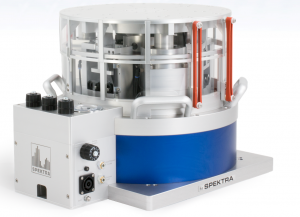
SE-13
Air-bearing electrodynamic Vibration Exciter with mounting table for high payloads up to 50 kg. Especially developed for the calibration and testing of big and heavy low frequency seismic sensors as well as geophones.
- Frequency Range: 0 – 400 Hz
- Max. Acceleration: 60 m/s2 peak
- Max. Force: 500 N
- Max. Displacement (peak-peak): 25 mm
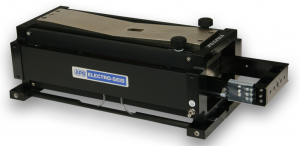
APS 113-AB
Air-bearing ELECTRO-SEIS® Long Stroke vibration exciter – especially developed for the calibration and testing for low frequency sensors and sensor characterization.
- Frequency Range: 0 – 200 Hz
- Max. Force: 133 N (optional: 186 N)
- Max. Displacement (peak-peak): 158 mm
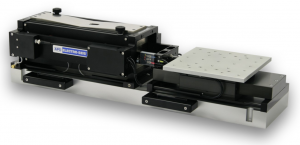
APS 129
Air-bearing ELECTRO-SEIS® Long Stroke Vibration Exciter with mounting table for high payloads up to 23 kg. Especially developed for the calibration and testing of big and heavy low frequency sensors as well as for sensor characterization.
- Frequency Range: 0 – 200 Hz
- Max. Force: 133 N (optional: 186 N)
- Max. Displacement (peak-peak): 158 mm

APS 500
Air-bearing ELECTRO-SEIS® Long Stroke vibration exciter with mounting table for payloads up to 3 kg. Especially developed for the calibration and testing of compact low frequency sensors and for sensor characterization at higher acceleration.
- Frequency Range: DC – 200 Hz
- Max. Force: 95 N
- Max. Displacement (peak-peak): 152 mm
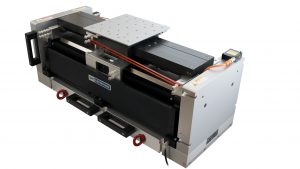
APS 600
Air-bearing ELECTRO-SEIS® Long Stroke vibration exciter with mounting table for very high payloads. Especially developed for the calibration and testing of geophones and heavy seismic sensors.
- Frequency Range: DC – 50 Hz
- Max. Force: 200 N
- Max. Displacement (peak-peak): 450 mm

APS 113
Ball-bearing ELECTRO-SEIS® Long-Stroke vibration exciter for modal analysis of oscillatory structures.
- Frequency Range: DC – 200 Hz
- Max. Force: 133 N (optional: 186 N)
- Max. Displacement (peak-peak): 158 mm
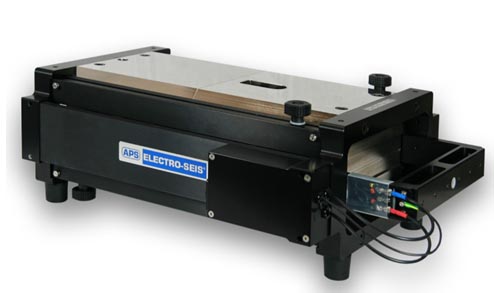
APS 400
ELECTRO-SEIS® Long-Stroke vibration exciter with 450 N max. force that is suitable for excitation of large structures such as ceilings or bridges.
- Frequency Range: DC – 200 Hz
- Max. Force: 445 N
- Velocity (Sine Peak): 1000 mm/s
- Max. Displacement (peak-peak): 158 mm
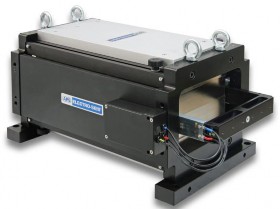
APS 420
The strongest ELECTRO-SEIS® Long-Stroke vibration exciter to date is used for vibration tests of airplanes and other large structures. With a maximum force of 900 N and up to 150 mm stroke the shaker unlocks a new performance level.
- Frequency Range: DC – 200 Hz
- Max. Force: 900 N
- Velocity (Sine Peak): 1000 mm/s
- Max. Displacement (peak-peak): 150 mm
Piezoelectrical Exciters
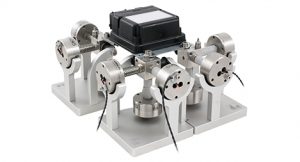
PC-X
Piezo Exciter, Multi Axis
- Frequency Range: 5 kHz – 40 kHz
- Max Acceleration: 300 m/s²
- Typical Cross Movement: < 20 %
- Operating Temperature Range: -50 °C to 140 °C
- High Frequency excitation of bigger DUT (e.g. sensor cluster with gyroscopes)
- Cube from technical ceramics with piezoelectric drive
- Low weight and high stiffness lead to high resonance frequency
- Vibration vs. temperature test in thermal chamber possible
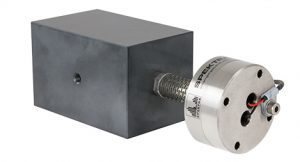
PC-01
Piezo Exciter, Single Axis
- Frequency Range: 5 kHz – 40 kHz
- Max Acceleration: 300 m/s²
- Typical Cross Movement: < 20 %
- Operating Temperature Range: -50 °C to 140 °C
- High Frequency excitation of bigger DUT (e.g. sensor cluster with gyroscopes)
- Cube from technical ceramics with piezoelectric drive
- Low weight and high stiffness lead to high resonance frequency
- Vibration vs. temperature test in thermal chamber possible
Shock Exciters
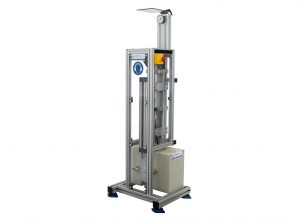
SE-201
Calibration of shock transducers as well as complete measuring instruments (measuring chain) with very high precision and efficiency.
- Pneumatically driven shock exciter
- Min. Shock Amplitude: 5 gn
- Max. Shock Amplitude: 10,000 gn
- To be used in calibration or test applications with larger pulse duration up to 5 ms.
- NEW: dynamic shock pressure calibration possible
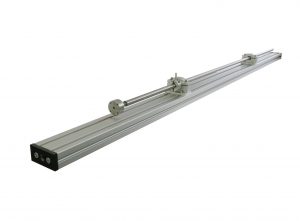
SE-220 HOP-MS
Shock exciter for testing and calibrating acceleration sensors as well as for environmental testing of small assemblies and parts.
- Patent-protected Medium-shock exciter
- For the amplitude range from 20 gn up to 4,000 gn.
- This exciter provides the force impact using a piezo-actuator
- Adjustable signal shape, amplitude, pulse width
- This allows new possibilities to control the mechanical shock signal and with its new applications in the field of the calibration and in particular in the field of measurement and test systems (e.g. to test the shock sensibility of MEMS sensors).
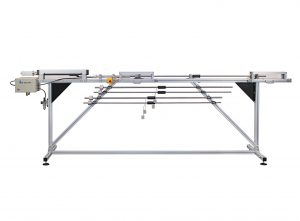
SE-221
Shock exciter for testing and calibration of shock transducers as well as complete measuring instruments (measuring chain) according to ISO 16063-22.
- Shock Amplitude: 1,000 to 100,000 gn (High shock bar), 5,000 to 200,000 gn (Very High shock bar)
- Sensor mass (DUT), max.: 15 g / 30 g (depending on selection of Hopkinson-bar)
- Sinusoidal shock as type of excitation
- Realization of all automatic calibrations according to own test regime (up to 20 shocks/minute)
- Secondary calibration of shock transducers and measuring chains according to ISO 16063-22
- Secondary calibration of shock accelerometer reference standards
Acoustics Exciters
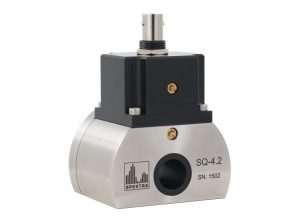
SQ-4.2 (Electro-Acoustic Coupler)
True pressure chamber calibration with an acoustic coupler
- Frequency Range: 31.5 Hz – 20 kHz*
- Sound Pressure Level: 74 dB – 134 dB (Frequency-dependent)
- True pressure chamber calibration for 1/2 and 1/4* inch microphones
- Acoustic coupler available for 1 inch microphones
* max. frequency of 2 kHz for 1/4 inch microphones
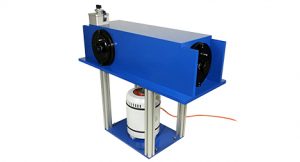
SQ-03 (Pressure Generator)
Very low frequency calibration of pressure transducers and pressure measuring devices
- True pressure chamber calibration with an acoustic calibrator
- Calibration of pressure transducers
- Calibration of all established measuring microphones (capacitor and electrets microphones, …)
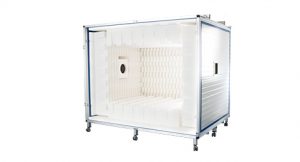
SQ-101 (Anechoic Chamber)
Compact anechoic chamber can be installed in any room without construction work
- Frequency Range: 125 Hz – 20 kHz
- Sound Pressure Level: 64 dB – 124 dB
- calibration of microphones according to DIN EN 61094-8
- calibration of sound level meters according to DIN EN 61672
- periodic tests of sound level meters according to DIN EN 61672-3 (incl. electrical tests)
- calibration of calibrators according to DIN EN 60942
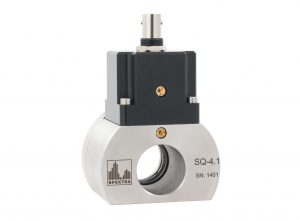
Electro-Acoustic Coupler, SQ-4.1
True pressure chamber calibration with an acoustic coupler
- Frequency Range: 31.5 Hz – 8 kHz
- Sound Pressure Level: 64 dB – 94 dB
- True pressure chamber calibration for 1 inch microphones
Pressure Exciters
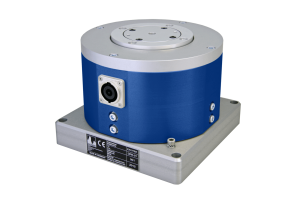
DPE-01
Dynamic pressure exciter for secondary calibration of pressure sensors
- Pressure Range: 16 kPa (0.16 bar)
- Frequency Range: DC – 1.25 kHz
- Pressure Amplitude: 100 Pa – 16kPa
- Medium: Oil
Magnetic Exciter
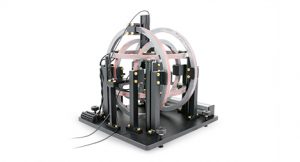
FDG-15 (Flux Density Generator)
Reliable tool for generating a static flux density of up to 3 mT in any direction inside the coil system.
- 3-axial magnetic excitation of devices under test
- Magnetic flux generator for any spatial direction
- Accuracy of magnetic field vector with respect to sensor axis at least ± 1°
- Earth magnetic field cancellation ≤ 1 μT
- Homogeneity of flux ≤ 1 %
Dynamic Rotation Exciter
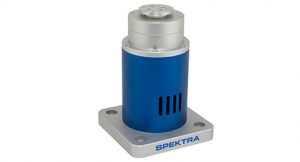
DRE-01
Used for calibration of transducers as well as for the characterization of devices (e.g. MEMS sensors).
- Frequency Range: 1 Hz – 5 kHz
- Max Payload: 0.5 kg
- Very low cross-acceleration
- Max Angular Velocity: 5300 °/s
- Max Angular Acceleration:2 500 000 °/s²
- Distortion factor (angular velocity): < 3%
- Electro-dynamic drive
Options & Accessories (Temperature)
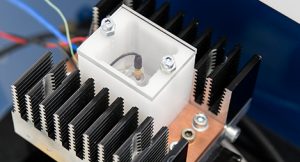
Peltier Element
Very accurate temperature control due to thermoelectric peltier effect
- Temperature Range: -10°C to 70°C
- Velocity of temperature change: slow (4k/min)
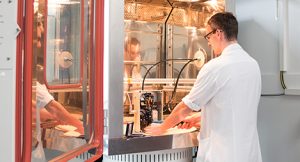
Climate Chamber
Wide temperature range and test of multiple samples
- Temperature Range: -70°C to 180°C
- Velocity of temperature change: Medium (10k/min)
Power Amplifier

PA180 DM
For all vibration exciters that require a 180 VA power amplifier (load impedance 0.8 Ω). The PA 180 DM offers a max. frequency range DC to 100 kHz, small harmonic distortion, excellent stability even with temperature or supply line variations and helpful protection functions.
- Frequency Range: 40 Hz to 20 kHz (at full power), DC to 100 kHz (small signal)
- Max Power Output: 180 VA into a 0.8 Ω resistive load
- Switch between voltage and current mode
- Phase Shift (0° or 180°)
S-TEST Software
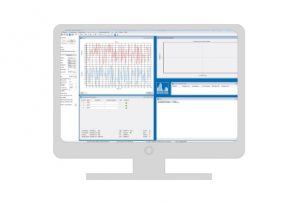
A strong hardware needs an efficient software
The S-TEST software gives product and test developers a flexible software framework at hand that enable fast development as well as adaptation of sensor system level tests. Exchangable core components allow quick modification of tests to support changing sensor interfaces.
The seamless integration with the S-TEST hardware offers a powerful combination to react on varying test requirements without the need to add new and expensive test hardware.
Aligned with a feature-rich test editor the framework offers versatile API‘s to enhance and control test execution and to interface with additional systems like measurement and data storage systems. User-firendly and adaptable application front-ends allow the replication of special test scenarios and support the optimized usability for test operators.
Flexible Software components
- Scalable technology, from a very simple control unit up to a very high performance and multi-channel controller
- Operation modes: sine, random, shock, chart, FDR, …
- Coordinated synchronized multi-channel excitation, also synchronized 3-dimensional excitation possible
- Time optimized and customer specific End-Of-Line-Test
Multiple Applications
- Research & Development
- Vibration testing
- Modal excitation
- Quality assurance
- Environmental testing
- Investigation of microstructures
- Sensor testing
